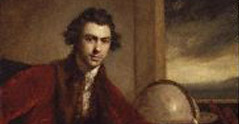|
INDUSTRIAL REVOLUTION: A DOCUMENTARY HISTORY
Series One: The Boulton & Watt Archive and the Matthew Boulton Papers from
Birmingham Central Library
Part 2: Muirhead I - Notebooks and Papers of James Watt and Family
Part 3: Engineering Drawings - Sun and Planet Type, c.1775-1802
Publisher's Note - Part 2
Part 2 of our project Industrial Revolution; A Documentary History covering the Boulton and Watt Archive and Matthew Boulton Papers from the Birmingham Central Library concentrates on the Notebooks and Papers of James Watt and family from the 8 boxes of material in Muirhead I.
James Watt was born at Greenock in January 1736 and began work in Glasgow at the age of 18. His father was a builder, contractor, instrument-maker, ship owner and merchant. In 1755 the young Watt spent a year in London learning how to make precision mathematical instruments. Two years later he opened a shop in Glasgow and by 1759 had entered into partnership with John Craig. He became involved in canal construction and made various journeys to London on canal business. Watt, of course, is famous for his pioneering work on steam power and his steam engine became known as 'the work-horse of the Industrial Revolution'. After repairing a Newcomen engine model in 1763 belonging to the College of Glasgow his work on the separate condenser steam-engine started in earnest around 1765. Before he moved to Birmingham, Watt’s circle of friends and peers included Joseph Black (who described latent heat) and Adam Smith.
Watt, according to his memoir of Boulton written in Glasgow in September 1809, first visited Soho Works in Birmingham in 1767. He was introduced to Dr William Small and his partner Mr Fothergill who then showed him round the works. In 1768 he was again at Soho, on his return from London where he had been taking the necessary steps to obtain a patent for the improved steam engine. On this visit he was introduced to Matthew Boulton who had been absent on the previous occasion. Watt records:
"I had much conversation with Mr Boulton … On my part I explained to him my invention of the Steam Engine and several other schemes of which my head was then full, in the success of which he expressed a friendly interest. My stay at Birmingham at that time was short, but I afterwards kept up a correspondence with Mr Boulton through our mutual friend Dr Small."
In 1774 Boulton took over Roebuck’s share in the patent of Watt’s invention. Watt moved to Birmingham (details of the journey are recorded in one of his notebooks) and continued his experimental work on the engine with great success. He quickly became an active member of the Lunar Society. The patent was extended for 25 years from 1775 and a partnership between Boulton and Watt was concluded for a similar term.
The material in Part 2 is a rich source for Watt’s developing interest in steam power including details of his experiments. Four notebooks cover his early notes on this subject and there is also a substantial section of correspondence, for the period 1778-1785, between James Watt and Joseph Priestley, Joseph Banks, Mr de Lue, Joseph Black and Mr Kirwan concerning various experiments with air, conversion of water to air and the composition of water.
Notebooks and other papers also contain much material on his canal surveys (at least 30 items are devoted to this topic - particularly the Strathmore, Monkland, Crinan, Borrowstonness, and Caledonian Canals); early negotiations with Roebuck and Boulton 1772-1774; insights into the patent process; other engineering works [for example, Greenock Harbour and Waterworks, Port Glasgow Dry Dock and Harbour, Ayr Harbour, Hamilton Bridge, Rutherglen Bridge and numerous River Surveys]; Watt Engines in Cornwall and throughout England and Scotland; notes of Watt’s journeys to London, Cornwall and Scotland; and a strong collection of printed items including Directions for Erecting and Working the Newly-Invented Steam Engines by Boulton and Watt (annotated copy 1779), memoirs of James Watt, and an account of James Watt’s Improvements upon the Steam Engine.
There are also some documents relating to his early life, family matters, to his father, James Watt, and also to the death of his first wife, Margaret.
Two boxes of material relate to his son, James Watt, Jnr. These include a diary of a journey to visit mines in Germany and Bohemia (1787), his travels in France, Italy, Switzerland and Germany (1792-3); substantial documentation on the Soho Manufactory and Foundry including materials for new engines, wages for workmen, pricing policy, a plan to establish watchmen at the Soho Manufactory (1801), visits to various mines and engines in the north of England (Manchester, Bradford, Newcastle, Durham, 1798), visits to the collieries and iron works of South Wales, a notebook containing a geographical list of engines and mines (1808); notes of experiments with steam boat engines; and notes on various engines at Water Works in Lambeth, Chelsea, West Middlesex and elsewhere. James Watt Jnr was very active in the Boulton and Watt businesses by the mid 1790’s and the papers included here reflect that. The firm of Boulton, Watt and Sons was established in 1794.
These notebooks and related papers feature very full entries and include some excellent diagrams, plans and drawings. This microform edition enables the scholar to examine closely the impact of Watt’s invention and see clearly the ties between business, industry and scientific inventions.
Each part of this project has a clear theme and unity. Libraries can acquire the project part by part confident that each area has clear research and teaching potential. The paperback guide contains full contents of reels, background information such as data on prominent individuals, detailed listings, chronologies and other relevant bibliographic details.
<back
|















